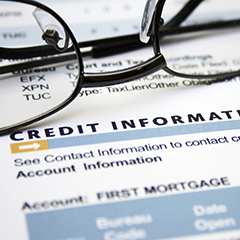Ranking Credit Customers
December 2, 2014 | Accounting Standards, Business Plans, Debt & Financing
 As all small business owners know, no sale is really a sale until the money is in. Most businesses no longer operate on a cash and carry basis, so customers buy on credit. This means that often the receipt of that money is delayed.
As all small business owners know, no sale is really a sale until the money is in. Most businesses no longer operate on a cash and carry basis, so customers buy on credit. This means that often the receipt of that money is delayed.
Every time a company extends credit it takes a risk that the payments will be late or, worst-case, won’t happen at all. The best way to minimize those risks is to take some basic precautions:
The first is to run a credit check to identify any potential problems a business owner might expect from a particular customer.
The second is to set credit limits at a fair risk level that are based on the customer’s FICO Score® and are reasonable for the customer.
Another thing that small business owners can do is to also assign their own company credit ratings to their customers to help further manage accounts receivable and keep the risk for their company down. These ratings can be used to help meet sales, profits, and debt-loss goals.
Here are six examples of in-house credit ratings:
1. Quality accounts. This is the top rating and goes to customers with no identifiable risk and that have cash flow sources that are enough to service the debt. These customers have well-established, realistic payment plans, and usually have a history of paying all invoices by the due date.
2. Acceptable accounts. This quality rating could be given to customers that are new, start-up businesses. It could also be used for those who might not have sufficient secondary sources of payment, but do have a satisfactory cash flow to pay their bills and loans. They show good character and that they have lived up to all previous credit agreements.
3. Accounts to watch. This is the point where business owners start to categorize deficiencies. Reasons for giving an account this rating include a first-time operating loss, a sales drop, an unsatisfactory payment plan, or a developing uncooperative attitude. These customers show the potential for further risk, but restructuring the debt could eliminate it. Business owners should pay close attention to watch out for developing credit problems.
4. Substandard accounts. These accounts have problems such as a poor payment history, a weak financial condition, or a cash flow that doesn’t cover the debt.
5. Doubtful accounts. These have the same inherent weaknesses as substandard accounts, but collection in full is questionable.
6. Loss accounts. Full collection is unlikely from these customers, and should be avoided if possible.
Remember, it doesn’t matter what small business owners call these in-house credit terms, as long as everyone at the company understands them. For more information about how to manage accounts receivable, meet with Filler & Associates.
